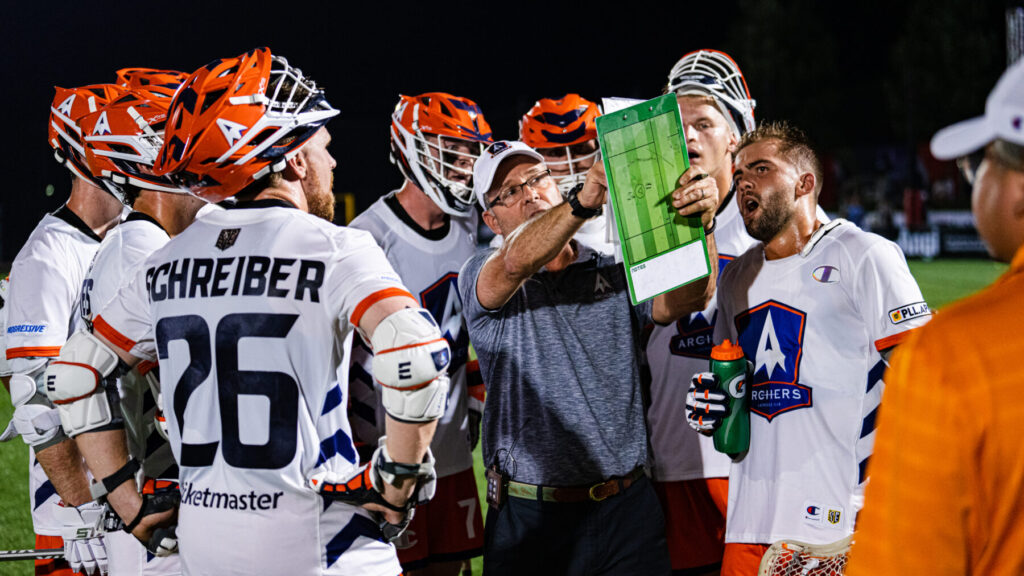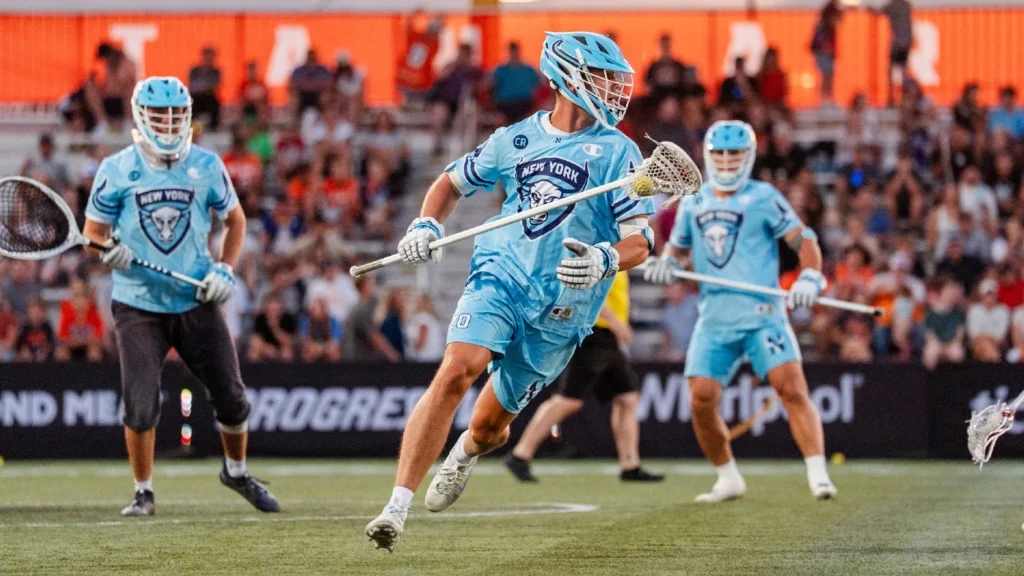
Why the Archers’ Lefty Fast Break Has Led Them to Limit Transition
By Zach Carey
Jul 25, 2023
The Archers are in a great spot. At 4-1 with an almost completely healthy roster and an impressive +13 score differential, the club has been the best in the league through the first half of the PLL season. Fifth overall pick in the 2023 College Draft Mike Sisselberger is dominating at faceoff (the club’s previous weakness), the defense has allowed the fewest goals in the league, and the offense is thriving on 32-second offensive possessions after Sisselberger’s wins.
Yet there is still room for improvement for a club that is hunting down its first championship. After leading the league in transition goals in 2022, the Archers have so far maintained their commitment to generating early offense in 2023. They’ve taken by far the most shots in transition with 8.6 per game relative to the rest of the league’s average of 5.7.
But, following 2022 when the club scored 3.1 goals per game (first in the PLL) for a 30.1% efficiency (second), the Archers are actually dead last in fast break efficiency so far this season at 20.8% with only 2.0 fast break goals per game. Not only is the team’s fast break efficiency the lowest in the league, but it’s the fifth lowest since 2019 and is nearly nine percentage points lower than the league average 29.6% efficiency in transition this season.
Clearly, the question that arises is: what changed? Most notably, the formation has. Marcus Holman and Will Manny’s free agency departures, Connor Fields’ subsequent move to attack, and Mac O’Keefe’s arrival in free agency mean that the Archers are playing the two lefties at attack. That has led to the club using a lefty “L” fast break with O’Keefe and Fields stacked on the lefty wing and a righty on the opposite side.
How the lefty fast break makes transition offense difficult
That matters because it changes the angles and the passing lanes for players initiating the fast break. It specifically makes it difficult for righties to establish a threat to score before throwing the ball back to O’Keefe at the point on their right side.
Take this transition possession generated off a Latrell Harris caused turnover as an example. As a righty, Harris is uncomfortable carrying into the heart of the defense and then passing the ball to O’Keefe. They create a perfectly respectable shot for how dangerous O’Keefe is as a step-down shooter. But, had Harris drawn O’Keefe’s defender farther across the field and waited to make the pass until he got to the two-point line, either the shot could have been far closer, or O’Keefe could’ve dished to Fields or Ament depending on how the two remaining Cannons defenders slid.
That’s not on Harris as much as it is the structure of the fast break. Settling for a Mac O’Keefe 12-yard step down rather than risking a turnover will always be the correct decision for a short-stick defensive midfielder. But that being the decision available speaks to why the Archers are shooting 23.3% on fast breaks and why O’Keefe has gone 22.2% (2-for-9).
This transition opportunity for Sisselberger is similarly impacted by the lefty break. Sisselberger bolts down the middle of the field, embracing attacking the goal with the attackmen spread. But with O’Keefe and Fields to his right, Sisselberger can’t reasonably pass to either of them, leaving both of their defenders available to slide. Jarrod Neumann (Fields’ defender) lurking on the crease forces Sisselberger to fade to his left to avoid him, resulting in an awkward, cross-body, low angle shot that Blaze Riorden gobbles up.
On both of these plays a righty “L” break would’ve almost certainly generated a better shot. For Harris, a righty break would’ve allowed him to comfortably engage the point defender and then force the defense to slide. In Sisselberger’s case, he probably still would’ve been responsible for shooting, but he could have avoided shooting across his body by carrying down the right alley instead of fading to his left due to the pair of Chaos defenders.
How the Archers are addressing their fast break offense
It’s an interesting conundrum for the club. O’Keefe and Fields have both thrived at attack in settled possessions and are critical pieces in the club’s 32-second offense, so bringing one of them through the box for the sake of improving the club’s fast break efficiency probably wouldn’t be worth it. And, with a degree of the club’s transition struggles a result of occasional over-aggression, the solution appears to be pulling back from running rather than altering how they run.
“Honestly, what we’ve learned is that we’ll take [a transition opportunity] if it’s there,” said Archers LC Head Coach and General Manager Chris Bates. “But, if it’s not, give it up and get off the field. We’re pretty tough to stop in half-field offense, so the thought is that we’ll be opportunistic. But if it’s not there don’t push it. We’ve gotten ourselves in trouble in some games where we’ve tried to be too much of an early offense, transition team. We’re learning that we’re just as good without that as a point of emphasis.”
The numbers back up what Bates says. The Archers have scored on 29.1% of their settled offensive possessions which is second in the league and far better than their 20.8% efficiency in transition. It makes sense that the club would want to limit forced shots from non-offensive personnel and not settle for taking rushed or contested shots from attackmen.
That doesn’t mean that the Archers are ruling transition out. “It’s the 85% rule,” adds Bates, saying that they’ll live with transition if “85% of the time whatever you’re going to do is going to end with a good result.” Otherwise, the staff wants their guys to “give it up and get it to the six guys who are paid to score the ball.”
A team’s fast break efficiency should always be better than their settled offensive efficiency. The Archers haven’t been able to effectively exploit situations where they’ve had an advantage with more personnel on offense than their opponents have on defense. Working to improve the fast break offense with the same volume would be ideal. It would raise their ceiling and make them a better offense on the whole, especially come playoff time.
But realistically speaking, playing to the club’s offensive strengths, doubling down on what’s been working, and not over-experimenting or sacrificing the half-field offense that’s been scorching defenses makes sense for now. The decision raises the club’s floor by addressing what has been their only true weakness through five weeks of play.
It will be important to keep tabs on whether the Archers can maintain or improve their current level of success and whether or not opposing teams find ways to counter them in half-field sets. If the Archers start to struggle in settled offense and the more reserved approach in transition doesn’t pay off, then adapting accordingly and testing a typical righty “L” fast break with Matt Moore and Grant Ament at attack alongside one of the lefties would be the way to go.






